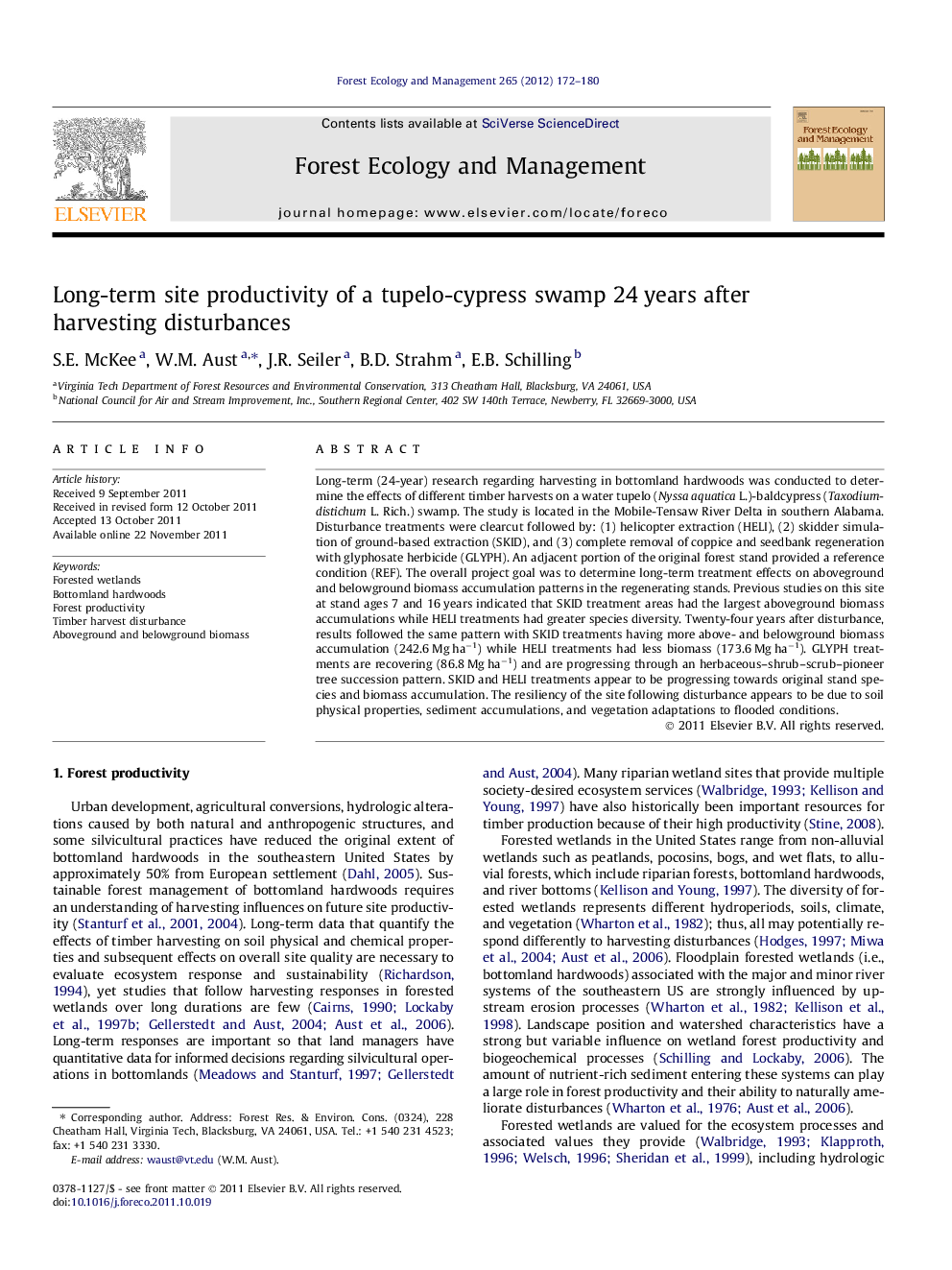| Article ID | Journal | Published Year | Pages | File Type |
|---|---|---|---|---|
| 87570 | Forest Ecology and Management | 2012 | 9 Pages |
Long-term (24-year) research regarding harvesting in bottomland hardwoods was conducted to determine the effects of different timber harvests on a water tupelo (Nyssa aquatica L.)-baldcypress (Taxodiumdistichum L. Rich.) swamp. The study is located in the Mobile-Tensaw River Delta in southern Alabama. Disturbance treatments were clearcut followed by: (1) helicopter extraction (HELI), (2) skidder simulation of ground-based extraction (SKID), and (3) complete removal of coppice and seedbank regeneration with glyphosate herbicide (GLYPH). An adjacent portion of the original forest stand provided a reference condition (REF). The overall project goal was to determine long-term treatment effects on aboveground and belowground biomass accumulation patterns in the regenerating stands. Previous studies on this site at stand ages 7 and 16 years indicated that SKID treatment areas had the largest aboveground biomass accumulations while HELI treatments had greater species diversity. Twenty-four years after disturbance, results followed the same pattern with SKID treatments having more above- and belowground biomass accumulation (242.6 Mg ha−1) while HELI treatments had less biomass (173.6 Mg ha−1). GLYPH treatments are recovering (86.8 Mg ha−1) and are progressing through an herbaceous–shrub–scrub–pioneer tree succession pattern. SKID and HELI treatments appear to be progressing towards original stand species and biomass accumulation. The resiliency of the site following disturbance appears to be due to soil physical properties, sediment accumulations, and vegetation adaptations to flooded conditions.
► Harvest disturbances in a forested wetland were evaluated 24 years after disturbance. ► Helicopter and skidder harvests had similar species and growth as reference stands. ► Productivity recovery was favored by presence of flood-tolerant species and shrink-swell clays. ► Non-compacted, nutrient-rich sediment inputs facilitated recovery. ► Site recovery was due to the interaction of soils, flooding, sediment, and vegetation.
